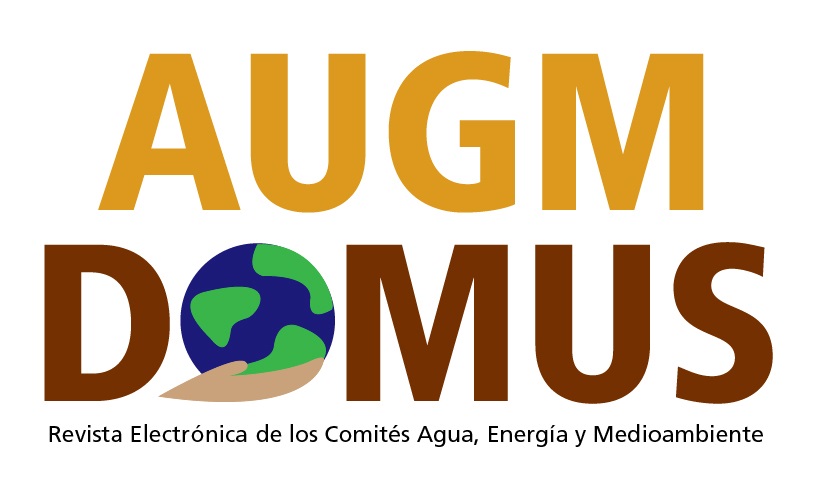Monitoring by remote sensing of the variation of surface water storage in hydrographic basins
DOI:
https://doi.org/10.24215/18522181e004Keywords:
water balance, lowland basin, remote sensingAbstract
The availability of satellite images on web platforms allowed for the creation of geospatial databases to estimate spatiotemporal water balances in a hydrological basin, contributing to the sustainable management of water resources and territory. The objective was to apply remote sensing monitoring techniques to define the variation of surface water storage during the 2017 wet season in subregion A1, northwest of the Salado River, Buenos Aires Province, Argentina. The period evaluated was between January and April, due to recorded flood emergencies, corroborated by National Meteorological Service rainfall data. For processing, precipitation data from the IMERG sensor, evapotranspiration data from the MODIS sensor, runoff data, and surface water storage data from the GLDAS 2.2 system were used. The analysis was carried out at the sub-basin level, due to the spatial variability of the data. In sub-basin 5, the lowest precipitation (750 mm) and the maximum evapotranspiration (275 mm) were indicated, while 835 mm of rainfall were recorded in the center of the A1 basin. Surface runoff showed the maximum in sub-basin 1 (68 mm), while values remained uniform in the rest of A1. It is concluded that remote sensing is an optimal methodology for describing water balance, and applying remote sensing monitoring techniques allows for the precise determination of the variation of surface water storage in a large area, representing the distribution of evapotranspiration and surface runoff reliably.
Downloads
References
Cámara Artigas, R., Martínez Batlle, J. R. y Díaz del Olmo F. (2012). Metodología y aplicaciones de los balances hídrico y bioclimático y su aplicación al estudio ecodinámico de las formaciones vegetales. Geografía Física – República Dominicana. https://www.geografiafisica.org/2012/09/17/plantilla-para-el-calculo-del-balance-hidrico-y-el-diagrama-bioclimatico/
Cellone, F. A., Borzi, G. E. y Carol, E. S. (2023). Balances hídricos y teledetección aplicados al estudio de inundaciones en la planicie costera del Río de la Plata, Buenos Aires, Argentina. Revista de Geografía Norte Grande, (84). https://revistachilenadederecho.uc.cl/index.php/RGNG/article/view/18625
Confederaciones Rurales Argentina (CRA) (2017). Inundaciones: informe de la Comisión de Emergencia de CRA. http://www.cra.org.ar/nota/19758-inundaciones-informe-de-la-comision-de-emergencia-de-cra/
Dillon, B., Pombo, D. G., Celeste, M., Uncal, M., Diharce, M. C., Escuredo, D. L., Palazzo, L., Pablo, J. y María, J. (2017). Las áreas inundadas y anegadas en el noreste de la provincia de La Pampa. Programa Proyectos Orientado de Interés Regional (POIRe). Resolución 231/2017. Consejo Superior de la Universidad Nacional de La Pampa.
Fernández-Long, M. E., Spescha, L., Barnatán, I. y Murphy, G. M. (2012). Modelo de Balance Hidrológico Operativo para el Agro (BHOA). Agronomía y Ambiente, 32(1-2), 31-47. http://agronomiayambiente.agro.uba.ar/index.php/AyA/article/view/4
Gómez, M. E., Gaspari, F. J., Perdomo, R. A., Simontacchi, L. E., Montealegre Medina, F. A., Rodríguez Vagaria, A. M., Tavarone, M. F. y Senisterra, G. E. (2017). Modelos digitales de elevación: correcciones altimétricas para uso hidrológico en áreas de llanura. Acta Geológica Lilloana, 29(1), 39-51. https://www.lillo.org.ar/index.php/publicaciones/acta-geologica-lilloana/v29n1/a03
Huffman, G. J., Stocker, E.F., Bolvin, D. T., Nelkin, E. J. y Tan, J. (2019). GPM IMERG Final Precipitation L3 1 month 0.1 degree x 0.1 degree V06 (GPM_3IMERGDF). [Data set]. Goddard Earth Sciences Data and Information Services Center (GES DISC). https://doi.org/10.5067/GPM/IMERGDF/DAY/06
Méndez-Jocik, A., Núñez-Pérez, A. D. J. y González-Robaina, F. (2021). Remote Sensing Application to Water Resources Management. Revista Ciencias Técnicas Agropecuarias, 30(1). https://rcta.unah.edu.cu/index.php/rcta/article/view/1369
Li, B., Beaudoing, H. y Rodell, M. (2020). GLDAS Catchment Land Surface Model L4 daily 0.25 x 0.25 degree GRACE-DA1 V2.2. [Data set]. Goddard Earth Sciences Data and Information Services Center (GES DISC), https://doi.org/10.5067/TXBMLX370XX8
Ospina Montes, D. L. (2016). Análisis de la información proveniente del satélite GRACE para el monitoreo de la acumulación de agua subterránea: caso ejemplo provincia hidrogeológica de los Llanos Orientales. Tesis de Maestría, Facultad de Ciencias, Universidad Nacional de Colombia. https://repositorio.unal.edu.co/handle/unal/58052
Pereira, A., Cornero, C., Amherdt, S. y Pacino, M. C. (2018). Análisis multitemporal del almacenamiento de agua continental en la Cuenca del Plata mediante gravimetría satelital. XXVIII Congreso Latinoamericano de Hidráulica.
Plan Maestro Integral de la cuenca del río Salado. (1999). MOSP. http://www.mosp.gba.gov.ar/sitios/hidraulica/informacion/planmaestro.php
Rivas, R. (2014). Aspectos ambientales de la Hidrología, FCH, UNCPBA. 23 pp. http://cursosihlla.bdh.org.ar/
Running, S., Mu, Q. y Zhao, M. (2017). MOD16A2 MODIS/Terra Net Evapotranspiration 8-Day L4 Global 500m SIN Grid V006. [Data set]. NASA EOSDIS Land Processes DAAC. https://doi.org/10.5067/MODIS/MOD16A2.006
Tang, Q., Gao, H., Yeh, P., Oki, T., Su, F. y Lettenmaier, D. P. (2010). Dynamics of terrestrial water storage change from satellite and surface observations and modeling. Journal of Hydrometeorology, 11(1), 156-170. https://doi.org/10.1175/2009JHM1152.1
Thomas, B., Famiglieti, J., Reager, J. T., Rodell, M. y Bolten, J. (2020). Sinopsis del Satélite GRACE y sus datos y aplicaciones. ARSET Applied Remote Sensing Training.
Thornthwaite, C. W. y Mather, J. R. (1957). Instruction and tables for computing the potential evapotranspiration and the water balance. Climate Crewel Institute of Technology, 10(3), 183-311.
Downloads
Published
How to Cite
Issue
Section
License
Copyright (c) 2023 Fabio Alejandro Montealegre Medina, Fernanda Julia Gaspari

This work is licensed under a Creative Commons Attribution-NonCommercial-ShareAlike 4.0 International License.
 AUGM DOMUS por Commité del Medio Ambiente del Grupo Montevideo se encuentra bajo una Licencia Creative Commons Atribución-NoComercial-CompartirIgual 4.0 Internacional (CC BY-NC-SA 4.0).
AUGM DOMUS por Commité del Medio Ambiente del Grupo Montevideo se encuentra bajo una Licencia Creative Commons Atribución-NoComercial-CompartirIgual 4.0 Internacional (CC BY-NC-SA 4.0).
El material se puede compartir (copiar y redistribuir en cualquier medio o formato) y adaptar (remezclar, transformar y crear a partir del material otra obra), siempre que a) se cite la autoría y la fuente original de su publicación (revista y URL de la obra), b) no se use para fines comerciales y c) se mantengan los mismos términos de la licencia.















